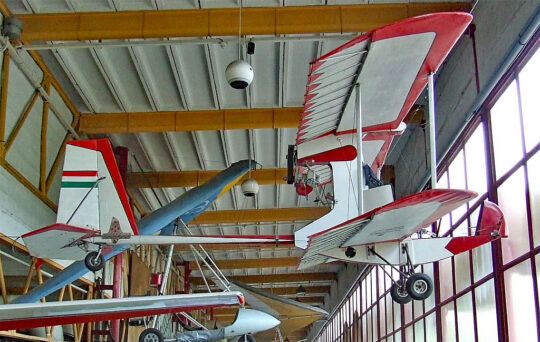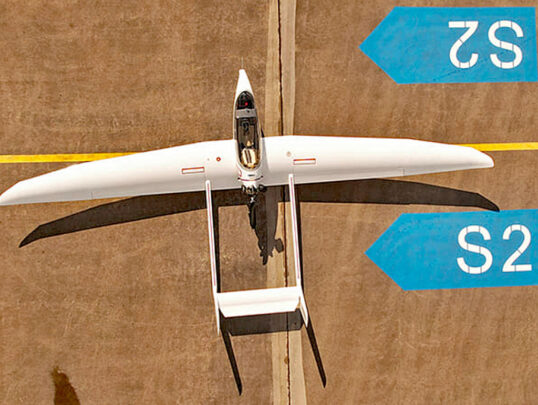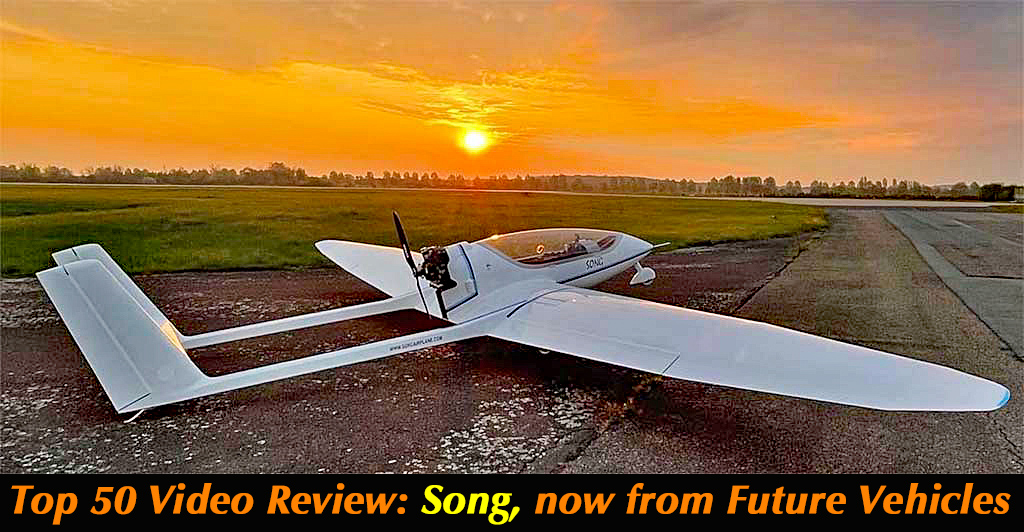
You know this airplane and you know this company, although a refresher might be in order. You can be excused if this one slips you mind. The airplane in the nearby images was from years ago when you probably first saw it with an electric motor developed by Randall Fishman, one of the original pioneers in the electric aircraft space. He was so far ahead of his time that a market for electric had yet to develop. When Randall flew his first battery-electric-powered trike 16 years ago at Oshkosh 2007, no one was using the terms “air taxi” or “multicopter.” Electric Aircraft Corporation didn’t complete many sales but Randall’s developments were ground-breaking. Now the handsome Song returns with a new producer, Future Vehicles. Earlier I wrote about the charming biplane Dingo, a modern-day follow-on to Hovey’s Whing Ding and worthy entry in the Part 103 space.


 You can be excused if this one slips you mind. The airplane in the nearby images was from years ago when you probably first saw it with an electric motor developed by Randall Fishman, one of the original pioneers in the electric aircraft space.
He was so far ahead of his time that a market for electric had yet to develop. When Randall flew his first battery-electric-powered trike 16 years ago at Oshkosh 2007, no one was using the terms "air taxi" or "multicopter."
You can be excused if this one slips you mind. The airplane in the nearby images was from years ago when you probably first saw it with an electric motor developed by Randall Fishman, one of the original pioneers in the electric aircraft space.
He was so far ahead of his time that a market for electric had yet to develop. When Randall flew his first battery-electric-powered trike 16 years ago at Oshkosh 2007, no one was using the terms "air taxi" or "multicopter."
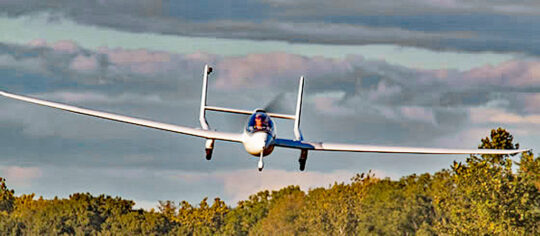
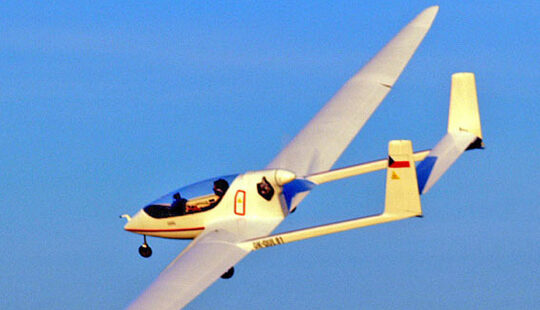 Why did these two different sort of Part 103 entries (Song and Dingo) end up in the same company? "Song was designed by Ing. Marek Ivanov, the engineer who behind the Dingo aircraft."
"Future Vehicles s.r.o. took over the production and sales of the aircraft at the end of 2021 based on an agreement with Gramex," reported Future Vehicles.
Why did these two different sort of Part 103 entries (Song and Dingo) end up in the same company? "Song was designed by Ing. Marek Ivanov, the engineer who behind the Dingo aircraft."
"Future Vehicles s.r.o. took over the production and sales of the aircraft at the end of 2021 based on an agreement with Gramex," reported Future Vehicles.
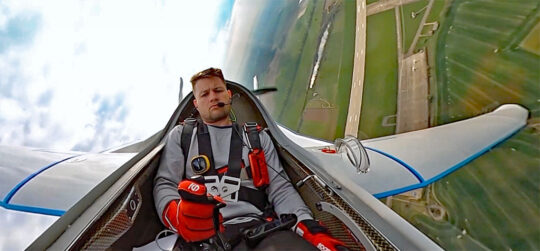 Song is a single-seater, low-wing ultralight aircraft with a pusher engine and tricycle gear equipped with spring-loaded nose gear. The nose gear is steerable.
Song is designed according to the Czech regulation UL-2 and compliant with the requirements of the German regulation LTF-L for 120 kilogram aircraft (very similar to Part 103). This means it is eligible as for America's Part 103 and Britain's SSDR.
"Song is aerodynamically and structurally optimized and made of carbon composite materials, to minimize empty weight," said Future Vehicles. "It has a distinctive twin-fuselage silhouette with the elevator located between the twin fins. The 11.2-meter (36.75 foot) wingspan wing is equipped with ailerons and air brakes."
Song is a single-seater, low-wing ultralight aircraft with a pusher engine and tricycle gear equipped with spring-loaded nose gear. The nose gear is steerable.
Song is designed according to the Czech regulation UL-2 and compliant with the requirements of the German regulation LTF-L for 120 kilogram aircraft (very similar to Part 103). This means it is eligible as for America's Part 103 and Britain's SSDR.
"Song is aerodynamically and structurally optimized and made of carbon composite materials, to minimize empty weight," said Future Vehicles. "It has a distinctive twin-fuselage silhouette with the elevator located between the twin fins. The 11.2-meter (36.75 foot) wingspan wing is equipped with ailerons and air brakes."
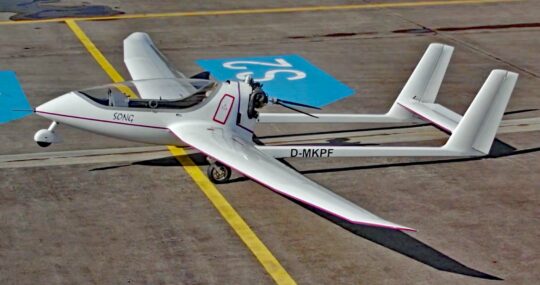 Song's cockpit is fully enclosed with a plexiglass canopy with a ventilation window on the left side. The seat is equipped with a four-point safety harness and adjustable back seat.
The control stick is located in the center and the throttle and air brakes control levers on the left side. Ailerons are connected to the stick by push-pull rods, and both the elevator and rudder are controlled by cables. Rudders are interconnected by a push-pull rod. Rudder pedals have multiple positions and can be adjusted according to the pilot’s needs.
Song's cockpit is fully enclosed with a plexiglass canopy with a ventilation window on the left side. The seat is equipped with a four-point safety harness and adjustable back seat.
The control stick is located in the center and the throttle and air brakes control levers on the left side. Ailerons are connected to the stick by push-pull rods, and both the elevator and rudder are controlled by cables. Rudders are interconnected by a push-pull rod. Rudder pedals have multiple positions and can be adjusted according to the pilot’s needs.
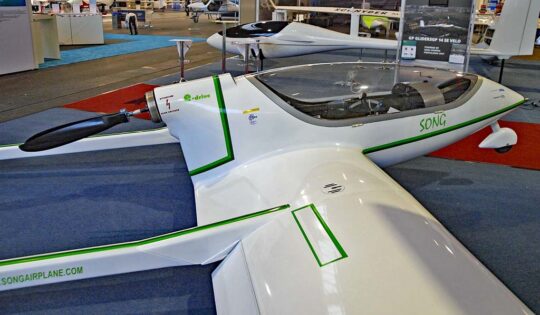
 This video, ranking in our Top 50 (at 292,000 views) discusses the conventional, gasoline-powered Song aircraft.
https://youtu.be/t7_YlthuPV0?si=WTOGYxqRzrbbhOOb
This video, ranking in our Top 50 (at 292,000 views) discusses the conventional, gasoline-powered Song aircraft.
https://youtu.be/t7_YlthuPV0?si=WTOGYxqRzrbbhOOb
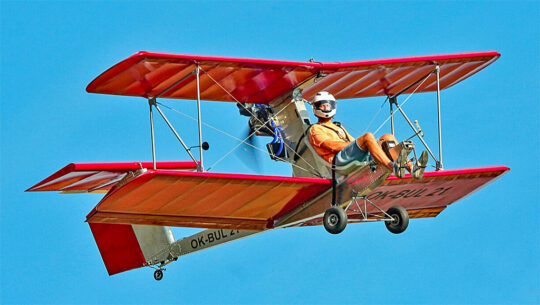 Tom Peghiny of Flight Design USA fame, wrote, "Jan Jilek is one of the design engineers of Future Vehicles as well as their test pilot. He is also a talented aerobatic performer. We flew together in a few planes while I was working in Sumperk, CZ [as a consultant to Flight Design]."
Dingo was created by Marek Ivanov. At the beginning of 2021, he showed the first 3D images to the Future Vehicles team. This is an experienced group that does a wide range of engineering work for a variety of aircraft producers.
Tom Peghiny of Flight Design USA fame, wrote, "Jan Jilek is one of the design engineers of Future Vehicles as well as their test pilot. He is also a talented aerobatic performer. We flew together in a few planes while I was working in Sumperk, CZ [as a consultant to Flight Design]."
Dingo was created by Marek Ivanov. At the beginning of 2021, he showed the first 3D images to the Future Vehicles team. This is an experienced group that does a wide range of engineering work for a variety of aircraft producers.
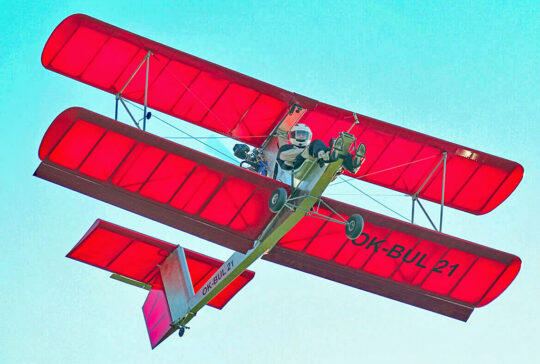 Dingo's main landing gear is welded from thin-walled steel tubes and bolts to the fuselage. Tail gear is steerable and straightened by spring. Ailerons and elevator are connected to the stick by push-pull rods, and the rudder is connected to welded pedals by cables.
Dingo made its maiden flight on June 22, 2022 at the Jaroměř (LKJA airport) only a year and a half after the team pondered the 3D drawings.
Dingo's main landing gear is welded from thin-walled steel tubes and bolts to the fuselage. Tail gear is steerable and straightened by spring. Ailerons and elevator are connected to the stick by push-pull rods, and the rudder is connected to welded pedals by cables.
Dingo made its maiden flight on June 22, 2022 at the Jaroměř (LKJA airport) only a year and a half after the team pondered the 3D drawings.
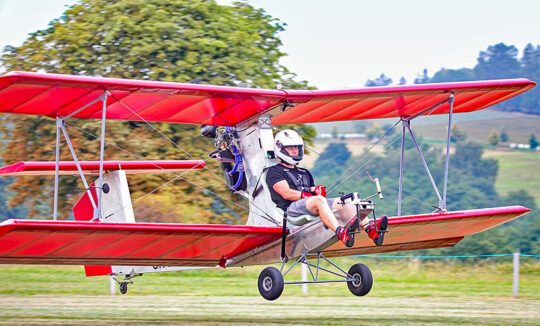 Dingo is a single-seat open cockpit biplane, powerplant in pusher configuration, a classic taildragger with a T-tail empennage. It was designed with a focus on easy and quick assembly. That promise is aided by using match-hole technology that assures a homebuilder without fancy jigs can accurately assemble Dingo subassemblies. This is now widely used in LSA but it is far less common on Part 103 entries.
Based in Hradec Králové, Czech Republic, Future Vehicles announced that the Dingo has passed several key milestones, and is now in full production.
Dingo is a single-seat open cockpit biplane, powerplant in pusher configuration, a classic taildragger with a T-tail empennage. It was designed with a focus on easy and quick assembly. That promise is aided by using match-hole technology that assures a homebuilder without fancy jigs can accurately assemble Dingo subassemblies. This is now widely used in LSA but it is far less common on Part 103 entries.
Based in Hradec Králové, Czech Republic, Future Vehicles announced that the Dingo has passed several key milestones, and is now in full production.
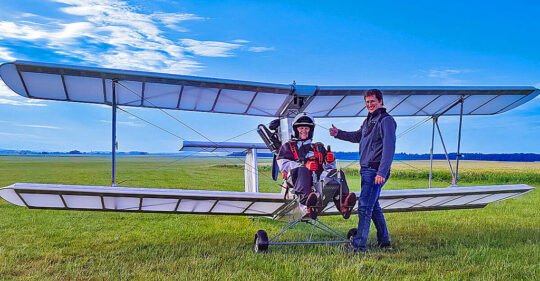
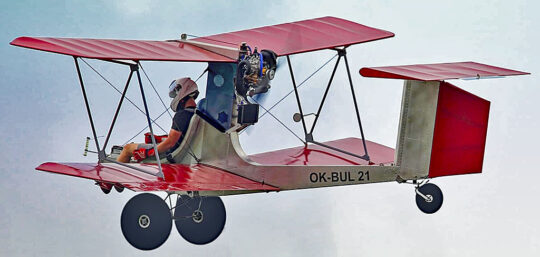
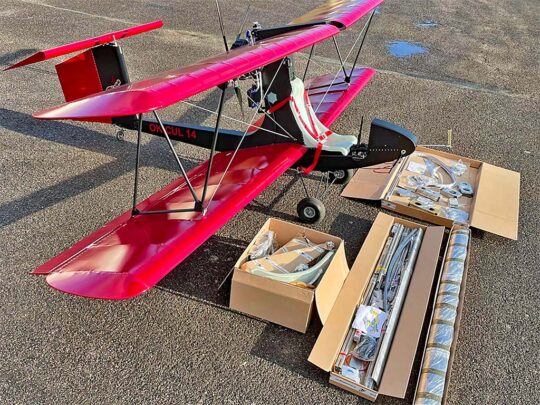 "The detailed assembly directions include both a PDF manual with excellent CAD drawings and parts lists of each assembly and companion videos of how each assembly is built," noted Future Vehicles.
The recommended covering is Ceconite polyester fabric. One current builder in the UK is using Oratex which does not even require painting. View a sample tutorial video of the assembly directions at the bottom of this page.
The exciting and easy-to-build aircraft is now available worldwide through an innovative, factory-direct business model (think: Tesla) that reduces delivery times. Currently Future Vehicles can ship in one month. Going factory direct ensures door-to-door delivery.
"The detailed assembly directions include both a PDF manual with excellent CAD drawings and parts lists of each assembly and companion videos of how each assembly is built," noted Future Vehicles.
The recommended covering is Ceconite polyester fabric. One current builder in the UK is using Oratex which does not even require painting. View a sample tutorial video of the assembly directions at the bottom of this page.
The exciting and easy-to-build aircraft is now available worldwide through an innovative, factory-direct business model (think: Tesla) that reduces delivery times. Currently Future Vehicles can ship in one month. Going factory direct ensures door-to-door delivery.
